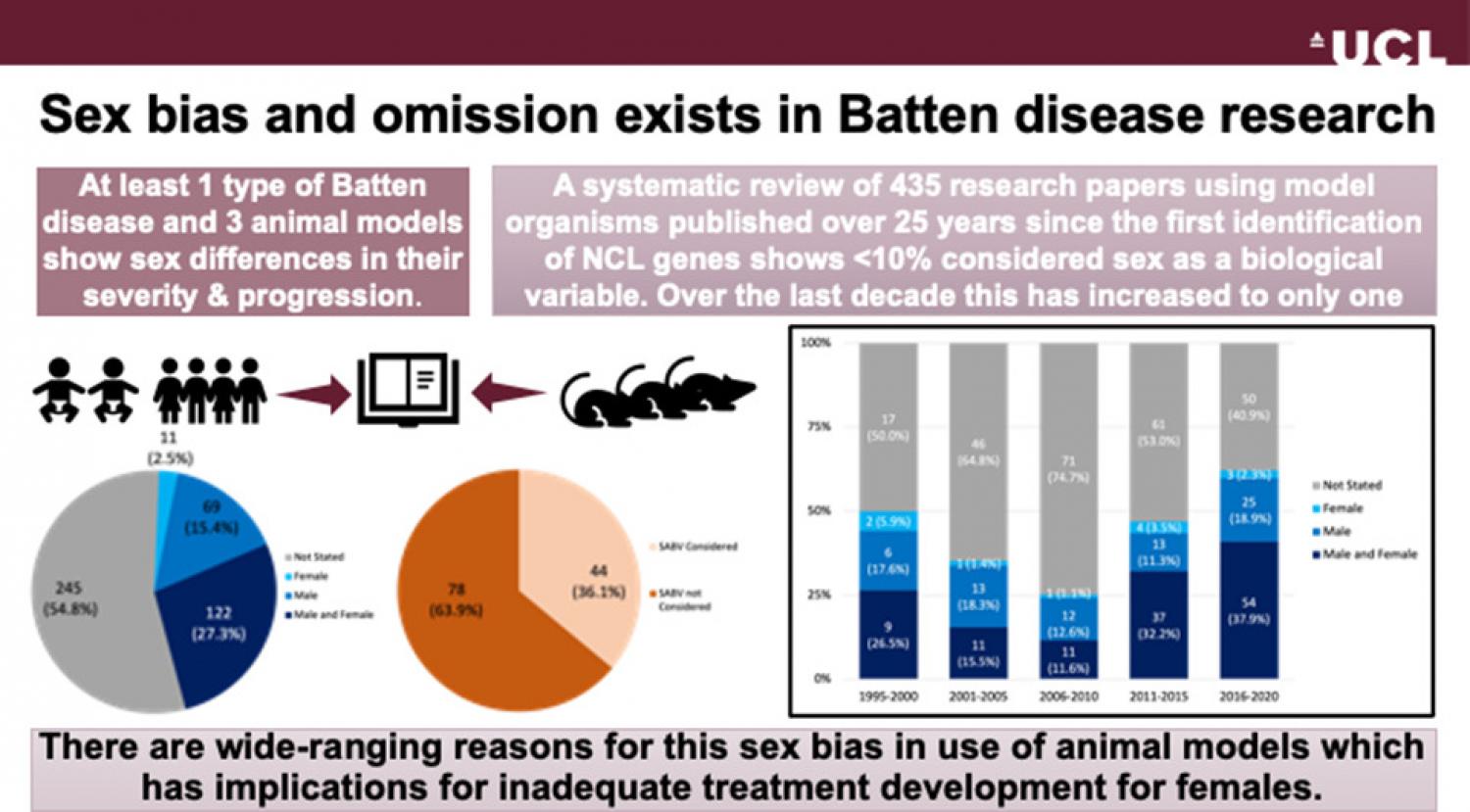
Batten disease, also known as the neuronal ceroid lipofuscinoses (NCL), is a group of inherited neurodegenerative disorders mainly affecting children. NCL are characterised by seizures, loss of vision, and progressive motor and cognitive decline, and are the most common form of childhood dementia. At least one type of Batten disease and three types of mouse disease models show sex differences in their severity and progression. Scientific research has a recognised prevalent omission of female animals when using model organisms for basic and preclinical research. Sex bias and omission in research using animal models of Batten disease may affect understanding and treatment development. We conducted a systematic review of research publications since the first identification of NCL genes in 1995, identifying those using animal models. We found that <10 % of these papers considered sex as a biological variable. There was consistent omission of female model organisms in studies. This varied over the period but is improving; one third of papers considered sex as a biological variable in the last decade, and there is a noticeable increase in the last 5 years. The wide-ranging reasons for this published sex bias are discussed, including misunderstanding regarding oestrogen, impact on sample size, and the underrepresentation of female scientists. Their implications for Batten disease and future research are considered. Recommendations going forward support requirements by funders for consideration of sex in all stages of experimental design and implementation, and a role for publishers, families and others with a particular interest in Batten disease.
